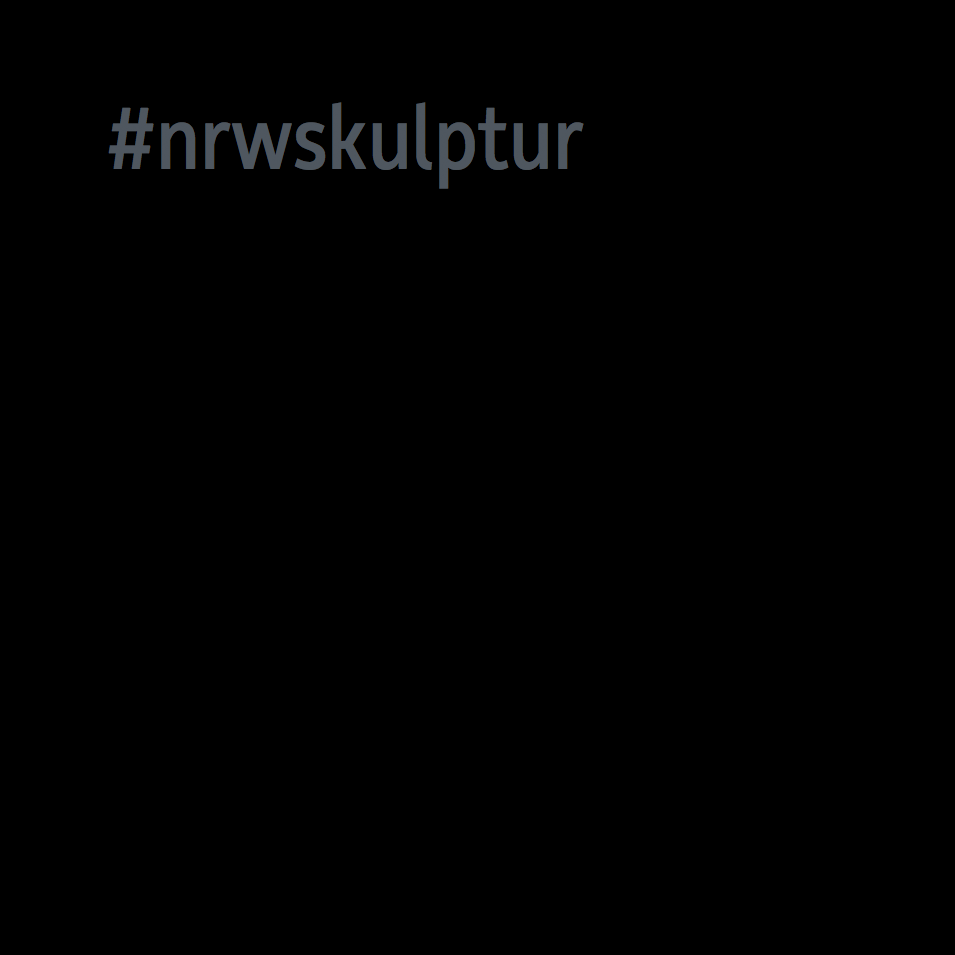CALX
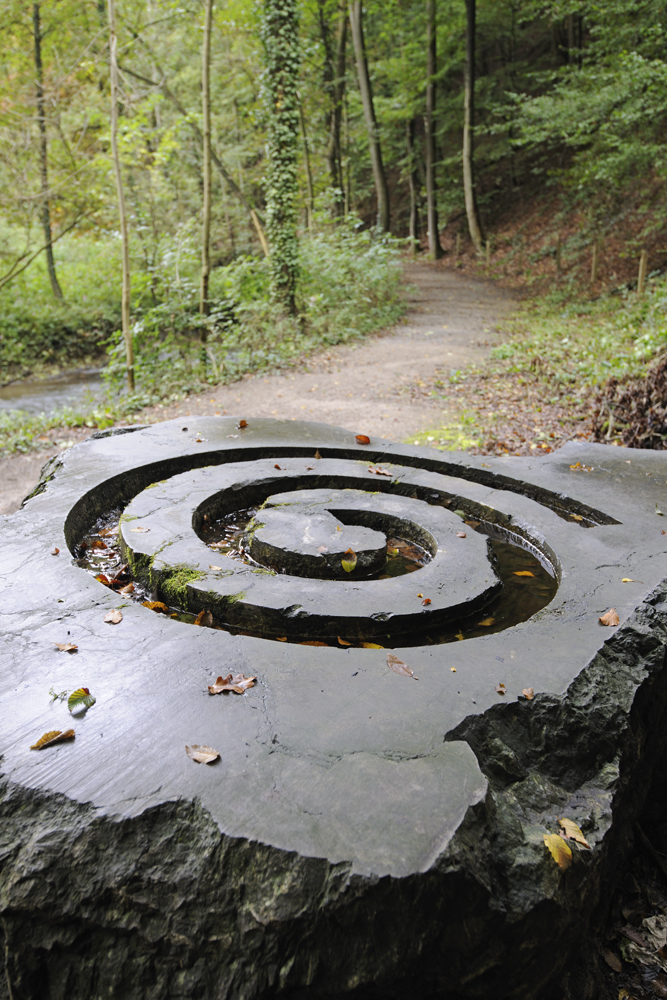
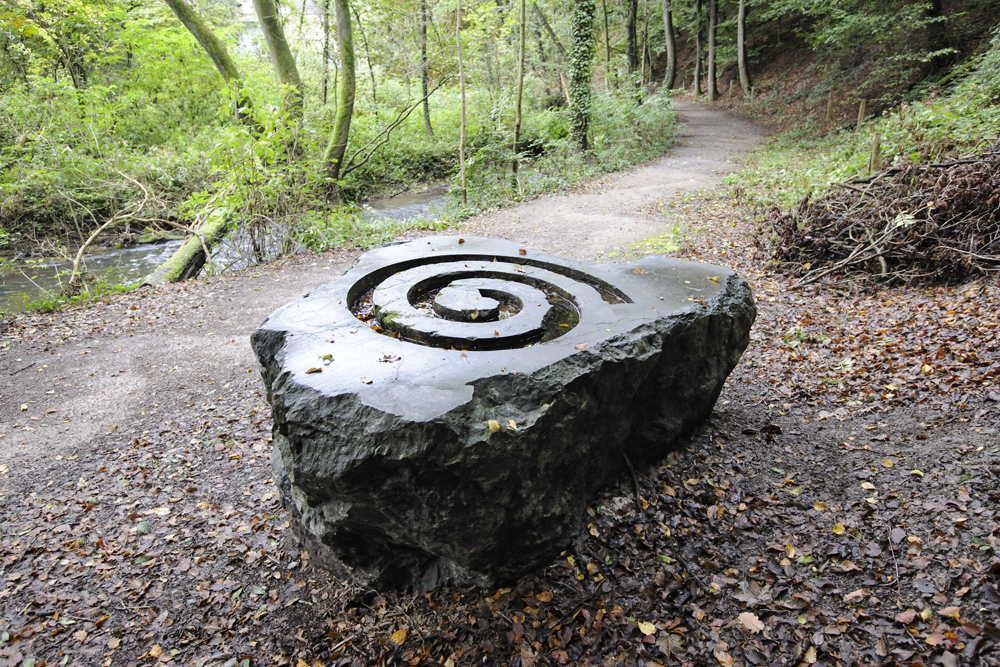
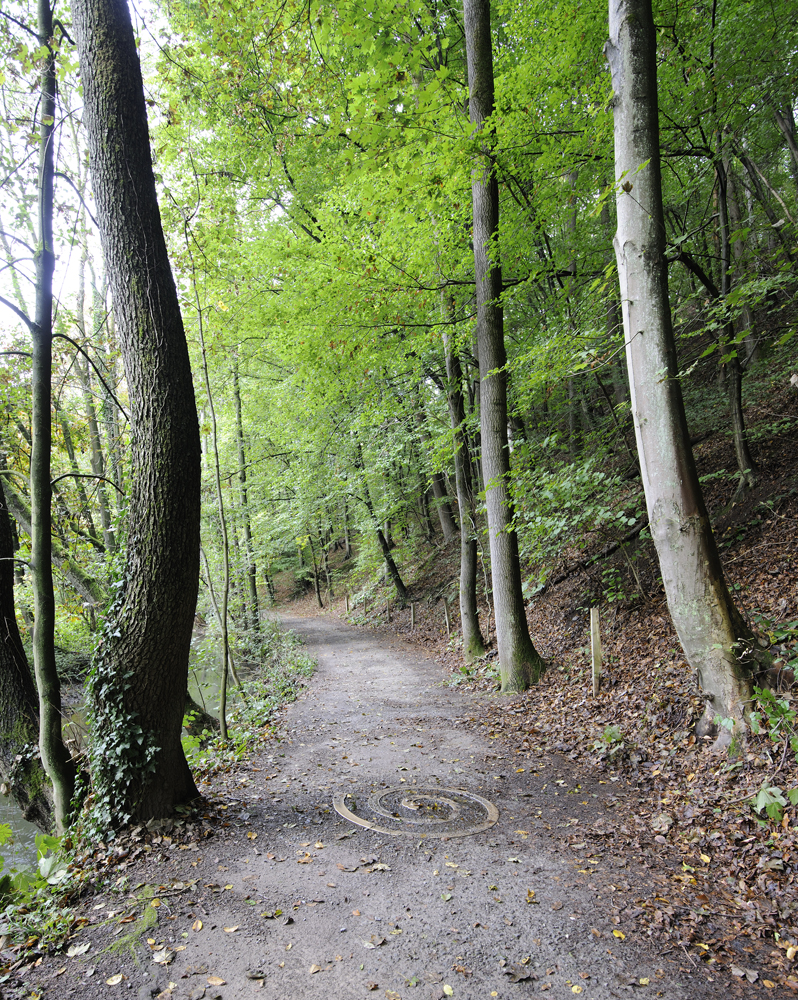
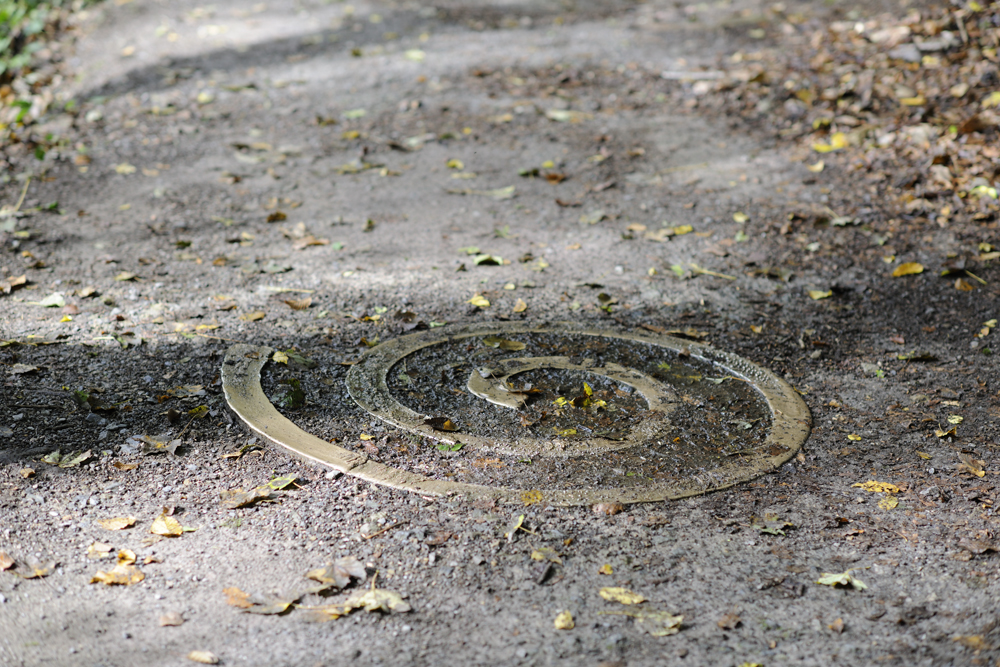
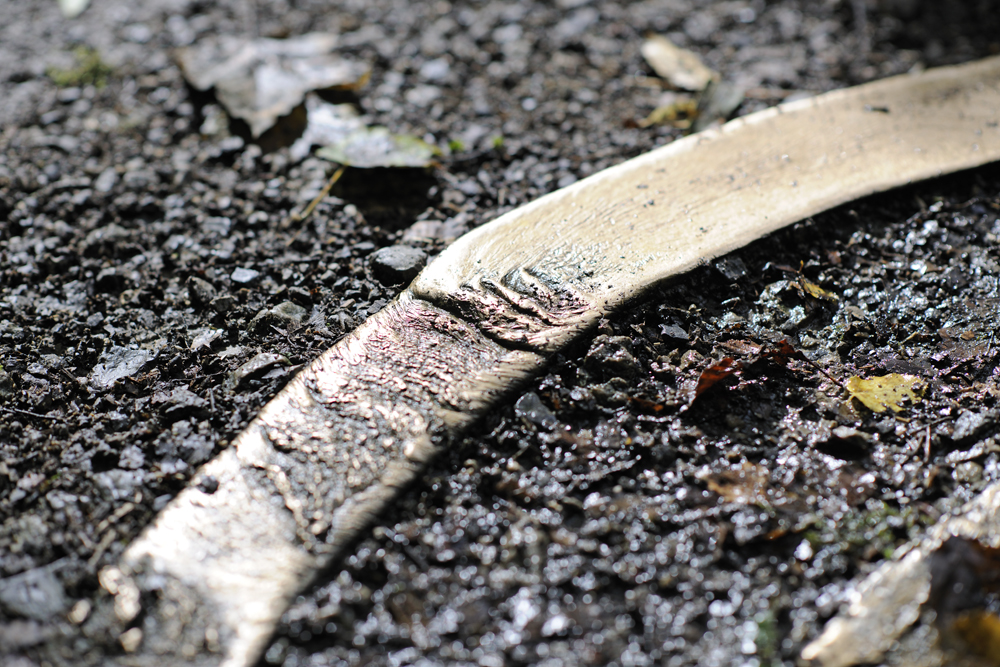
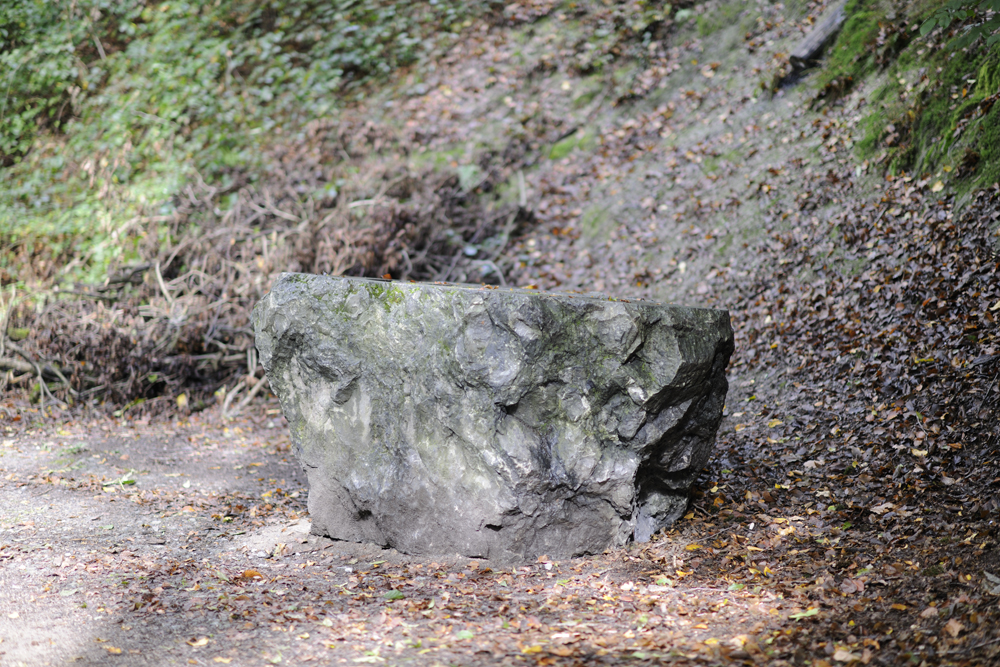
Klaus Simon created a two-part sculpture for the Neandertal Kunstweg, which visualizes the traditional manual processes that had a role in the cultural development of mankind. A large block of native limestone was cut with a diamond wire based on an old industrial mining technique. A spiral was then chiseled into the newly smoothed surface by hand. Next, the bronze was heated to its melting point and poured into the spiral. This process produced visible burn marks in the stone. In order to prevent the stone from splitting open, it had to first be dried and then slowly heated. Once it was cooled, the bronze spiral was removed and placed on the trail at a distance from the stone. An attentive hiker will notice the connection between the negative and positive forms of the spiral shape.
The spiral is one of the oldest symbols for a macrocosm (space) or microcosm (snail shell, DNA), but also can be used to represent creation in general, which continues to evolve.
Reference: de.wikipedia.org, www.mettmann.de
Further reading:
Katalog zum Kunstweg MenschenSpuren, eds. Volker Friedrich Marten and Gerd-Christian Weniger, Mettmann, Neanderthal Museum 2002.
Klaus Simon
← Zur Startseite
Mettmann, Neandertal Kunstweg
